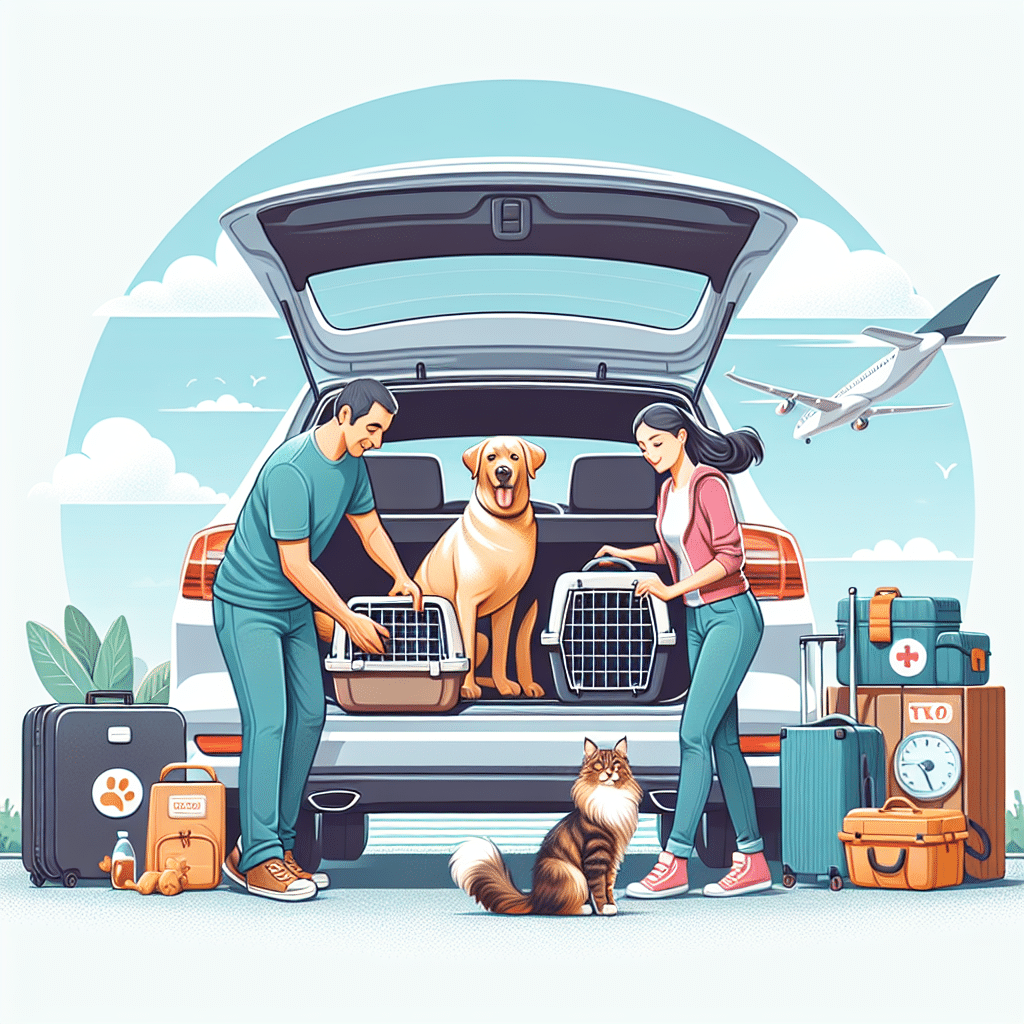Essential Tips for Traveling with Pets by Car
Traveling with your furry friends can be a wonderful adventure, but it requires preparation and strategy. Here are essential tips to ensure a smooth journey.
1. Plan Your Route Wisely
Before setting off, plan your route with pet-friendly stops in mind. Use apps like BringFido to find pet-friendly rest areas, parks, and accommodations along the way. This makes it easier to find places where your pet can stretch, relieve itself, and enjoy some fresh air.
2. Pack Essentials for Your Pet
Create a travel bag for your pet, including:
- Food and water bowls
- Sufficient food for the trip (plus a little extra)
- Medications and a first-aid kit
- Leash, harness, and collapsible water bottle
- Waste bags for clean-ups
- A favorite toy or blanket for comfort
3. Secure Your Pet for Safety
Ensure your pet’s safety during the trip. Use a pet seatbelt, a travel kennel, or a restraint system designed for car travel. This not only protects your pet but also minimizes distractions while you’re driving. Always keep pets in the back seat; airbags can be dangerous for them.
4. Get Your Pet Comfortable with Car Rides
If your pet isn’t used to car travel, take them on short drives ahead of your trip to acclimatize them to the experience. Gradually increase ride durations to help them adjust. Reward them with treats or praises to encourage positive associations.
5. Schedule Breaks Every Few Hours
Plan to stop every two to three hours to give your pet a break. During these stops, offer them water, let them explore, and take bathroom breaks. This promotes good behavior and keeps them comfortable throughout the journey.
6. Maintain a Comfortable Temperature
Pets can overheat quickly in a car. Ensure the inside temperature is comfortable; use air conditioning or roll down windows as needed. Never leave your pet in a parked vehicle, even for a short time, as temperatures can rise dangerously fast.
7. Consider Pet Identification
Ensure your pet has proper identification. Consider a collar with an ID tag and a microchip. This is crucial in case your pet escapes or gets lost during the trip. Always carry a current photo of your pet in case you need to search for them.
8. Create a Familiar Environment
Bring items from home that smell familiar to your pet. Their favorite blanket, bed, or toys can provide comfort and help reduce anxiety during travel. Familiar scents can be very soothing for pets in new environments.
9. Monitor Motion Sickness
Some pets may experience motion sickness. If this is a concern, consult your veterinarian for solutions. There are medications and natural remedies that can help ease nausea and make travel more enjoyable for your pet.
10. Choose Pet-Friendly Accommodation
When planning overnight stops, research hotels or campgrounds that welcome pets. Always inform the property in advance about your pet. Check for pet policies, including any additional fees, weight limits, or breed restrictions.
11. Be Cautious at Rest Stops
When selecting a rest stop, choose parks or areas specifically designed for pet use. Keep your pet on a leash at all times and be mindful of other animals and people. Clean up any waste your pet leaves behind to maintain a clean environment for everyone.
12. Communicate with Your Pet
Talk to your pet during the drive to reassure them. A calm voice can help ease any anxiety. Some animals respond positively to soothing music, so consider creating a playlist specifically designed for pets.
13. Carry Documents and Vaccination Records
Have your pet’s health documents handy. This includes vaccination records and any important medical history, especially if you are traveling across state lines. Some regions have specific vaccination requirements, and you may need these documents for boarding or emergencies.
14. Keep Your Pet Hydrated
Hydration is essential, especially during long trips. Offer water frequently, and if your pet doesn’t drink much, try wetting their food. There are also portable water bottles designed for pets that make it easy to hydrate them on the go.
15. Adjust Feeding Schedule
To avoid motion sickness, feed your pet several hours before departure. During long journeys, stick to familiar foods and maintain a regular feeding schedule. If it’s a multi-day trip, keep their meal times consistent.
16. Be Prepared for Breakdowns
Have a plan in place in case of vehicle breakdowns. Keep a list of local veterinarians along your route and ensure your phone is charged for emergencies. It’s also wise to pack a basic pet first-aid kit for any unexpected situations.
17. Travel with an Enrichment Strategy
During long periods in the car, keep your pet occupied to prevent boredom. Use interactive toys or puzzles that encourage your pet to engage their mind. Chew toys can also provide comfort and distraction during the journey.
18. Keep Your Pet Calm
Anxiety can manifest in various ways. If your pet is prone to anxiety, consider using calming products like sprays, supplements, or anxiety wraps. Speak with your veterinarian for recommendations that may be suitable for your pet.
19. Practice Proper Etiquette at Destinations
When you arrive at a new destination, respect local pet policies. Keep your pet leashed in public areas and ensure they are well-behaved around other guests or wildlife. Clean up after your pet to maintain a courteous presence.
20. Allow Pets Time to Adjust
Upon reaching your destination, give your pet time to acclimate to the new environment. Explore your surroundings gradually, allowing your pet to familiarize itself with the space. This can prevent anxiety and help them feel more secure.
Traveling with pets requires careful planning and attention to detail. By following these essential tips, you can create a positive and enjoyable journey for both you and your beloved companions.
